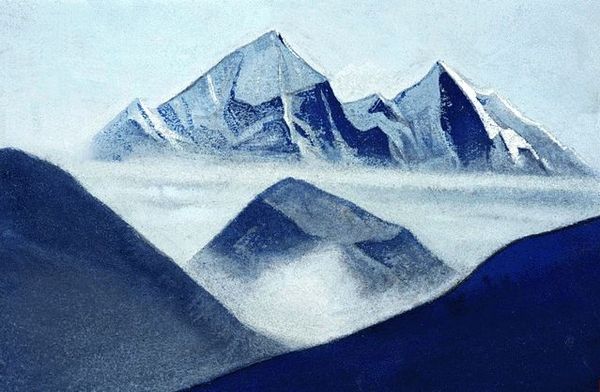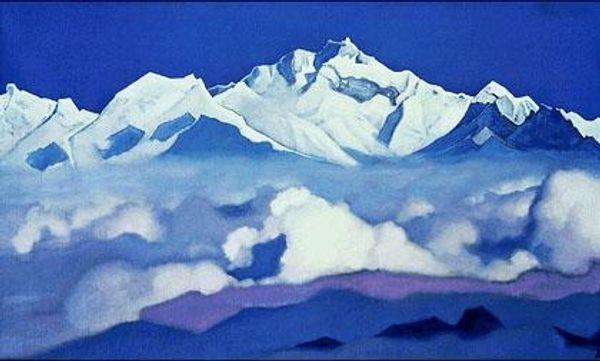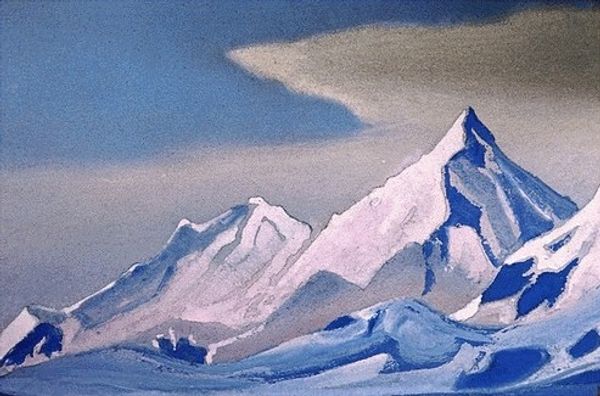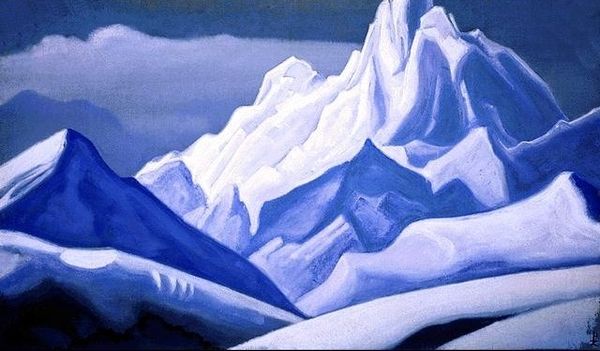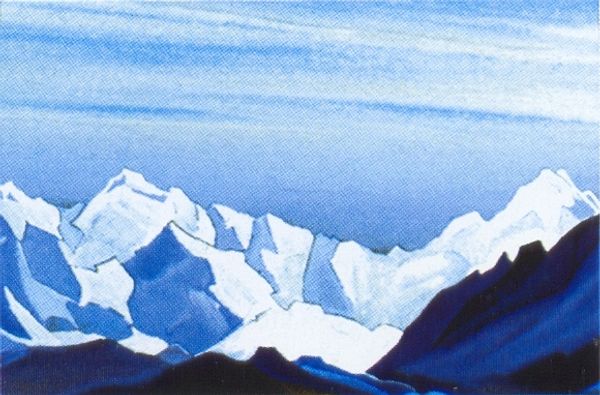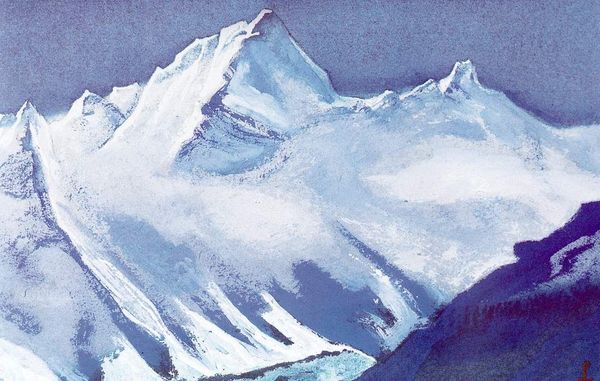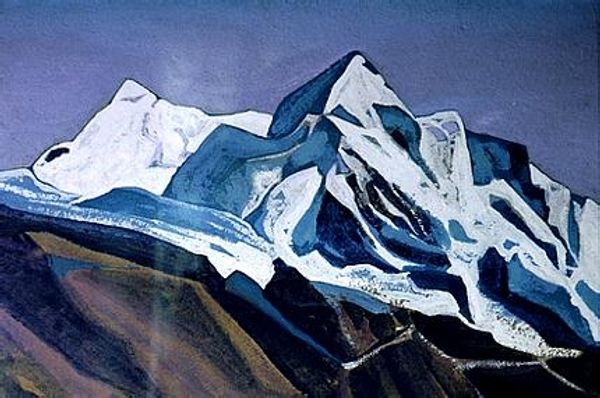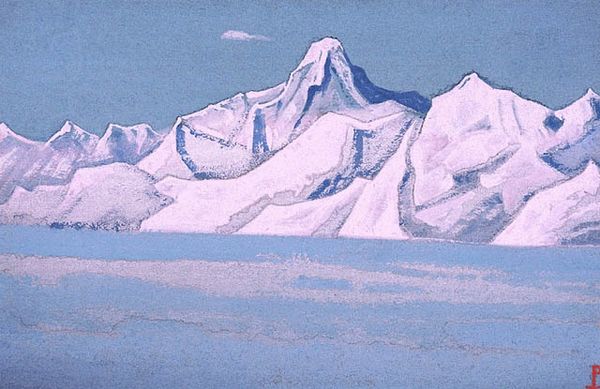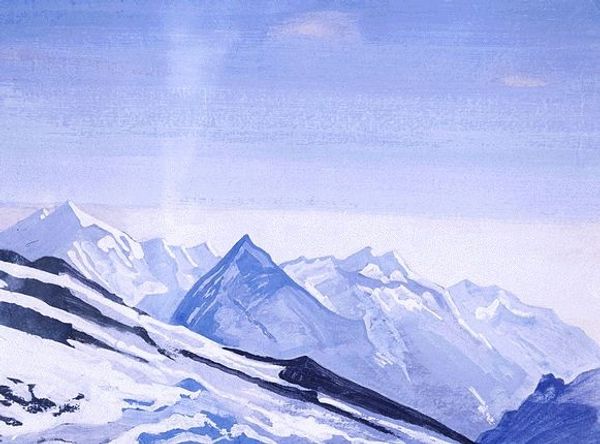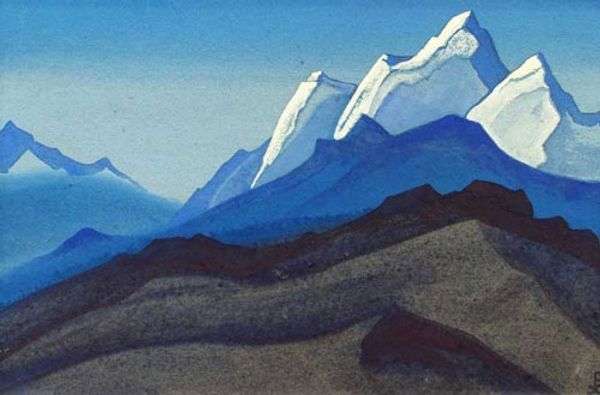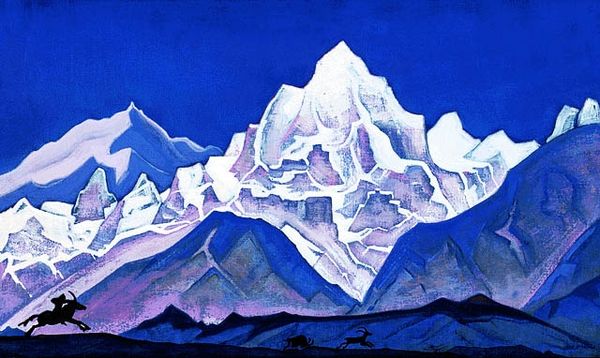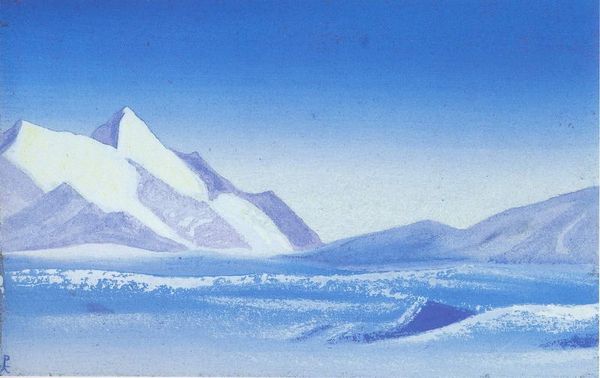
Copyright: Public domain
Editor: So, here we have Nicholas Roerich’s "Himalayas" from 1942, rendered in watercolor. The cool blues and whites create such a serene and almost dreamlike atmosphere. How do you interpret this work? Curator: Roerich’s landscapes are never simply representations; they're imbued with social and philosophical weight. Consider the historical context: 1942. While the world was engulfed in war, Roerich painted the Himalayas. It's not just a landscape; it's a symbol of peace, spiritual transcendence, and resistance. Do you see how the almost abstracted forms lend themselves to symbolic readings? Editor: I do see that. It's not hyper-realistic, it’s simplified…suggestive, maybe? Almost like he's painting an idea of a mountain, not a specific one. Curator: Exactly. Roerich was deeply involved in theosophy and Eastern philosophies. The Himalayas were, for him, a source of spiritual power. This work connects to his broader activism: his push for a "Peace Pact" to protect cultural monuments during wartime. How might this inform your understanding of the piece? Editor: It completely reframes it. I saw a beautiful landscape, but now I understand it as a quiet, powerful call for peace and the preservation of culture amidst destruction. The sublime becomes a political statement. Curator: Precisely. Art like this urges us to engage with the social responsibility that it carries and consider the various stories and backgrounds, too often forgotten, interwoven within the narrative that an image conveys. Editor: That's incredible. I’ll never look at a landscape the same way again! Thanks for opening my eyes to these crucial contextual elements! Curator: My pleasure. It's these interdisciplinary perspectives that enrich our appreciation and understanding.
Comments
No comments
Be the first to comment and join the conversation on the ultimate creative platform.
